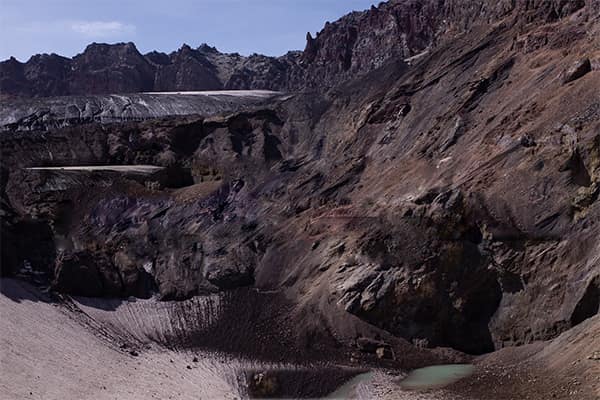Use of Manufactured (m) Sand in Construction
- Concrete Cost Estimator
- Concrete Continuous Footing
- Landscape Bidding and Estimating
- Construction Cost Estimating
- Concrete and steel cost estimation
- Construction Cost Estimate Breakdown
- Construction Estimating Worksheet
- Home Construction Cost Estimate
- Estimate Pricing Sheet
- Sheet for General Contractor
- Construction Cost Estimate
- Labor Materials Cost Estimator
- Masonry Estimating Sheet
- Sheet for Building Contractor
- Construction Schedule Bar chart
- General Cost Estimator Sheet
- General Construction Estimate
- Building and Road Estimating Sheet
- Detailed expense estimates
- Door and Window Takeoff Sheet
- General Construction Cost Estimating Sheet

Manufactured sand has an important place in the world of construction.
Manufactured sand is used as a substitute for river sand.
In this blog, we will discuss in detail about manufactured sand and its uses in the construction industry.
What is Manufactured Sand?
Manufactured sand is an artificial sand produced by crushing hard granite stones into cubical shapes for mixing with cement or concrete.
The size of m sand or manufactured sand is less than 4.75mm and It is used as a substitute for river sand, while both have different physical and mineral properties, still Manufactured sand is preferred over river sand because it goes through a proper manufacturing process.
Also Read : Types of Sand Used in Construction
M sand Manufacturing Process
Extracting and Blasting
- The rocks are broken down into smaller parts by blasting them so that they can be handled easily.
Aggregate Crushing
- The small stones are fed to primary and secondary crushers to reduce tier size. Then the stones are further crushed into sand-like particles using vertical shaft impact (VSI).
Screening and Sorting
- Manufacturing plants screen the sand by using feeders so that they can obtain a uniform particle size.
Air Classifying
- Air classifying is done to separate larger particles from finer particles.
Also Read : How to Find Cement Sand and Aggregate Quantity in Concrete
Manufactured Sand Specification
- Durable
- High Strength.
- Cost-effective
- Provides Great Workability
- Artificially Created Sand
- Prevents Construction Defects
Manufactured Sand for Concrete
Manufactured sand is used in concrete because of the following reasons.
- Higher Concrete Strength
- Enhance Workability
- Fewer Defects
- Economy
- Eco-friendly
The physical properties like shape, the smooth structure of the surface, and consistency of manufactured sand provide additional strength to the concrete mix by preventing segregation, honeycombing, bleeding, voids, and capillary.
Because of manufacturing sand, the concrete mix demands less water and provides higher workability.
Because of the optimum initial and final setting time the use of manufacturing sand prevents defects in the structure.
The use of manufacturing sand reduces post-concrete defects, it also is more economical than the river sand, and also saves transportation costs.
As the manufacturing sand is artificially created it prevents the misuse of river beds.
Manufactured Sand Uses
Manufactured sand is used as a better substitute for river sand. It is used in the production of concrete as mortar mix which can be used in any kind of concrete work and masonry-related work.
Manufactured Sand Density and Specific Gravity of Manufacturing Sand
Manufacturing sand has a density of 1850 kg/m3, and the specific gravity of manufacturing sand is around 2.56.
Advantages and Disadvantages of Manufacturing Sand
Following are the advantages and disadvantages of manufacturing sand.
Advantages of Manufacturing Sand
- Manufacturing sand provides good workability due to a higher fineness modules index.
- Cost-effective due to higher availability and less transportation cost.
- Provides higher strength and durability to concrete due to perfect grading and cubical shape.
- Eco-friendly
- Better abrasion resistance
Disadvantages of Manufacturing Sand
- More water and cement requirement due to smooth and angular texture.
- The strength and workability of concrete can be compromised if the manufacturing sand contains a larger number of micro-fine particles.
These were the advantages and disadvantages of manufacturing sand.
Conclusion
So, this was all you need to know about manufacturing sand. Manufactured sand in India is readily used due to its properties.
The use of manufactured sand is crucial as it has many added benefits to it.
- Application of concrete calculator
- Roofing Calculator can streamline the roof estimating process
- House construction cost calculator
- Engineering column design excel spreadsheet
- Material Estimating Sheet with Excel
- Materials List and Cost Estimate Worksheet
- Concrete Slab Estimating Calculator Sheet
- Common types of foundations for buildings
- Online calculation of construction materials
- Estimating with Excel for the Small Contractor
- Concrete Beam Design Spreadsheet
- Virtual Construction Management app for construction
- Autodesk’s Project Skyscraper
- Reed Construction’s Reed Insight
- Manage your construction project documentation
- Costimator, the popular cost estimating software
- On Center Software for construction professionals
- Free Construction Estimating Software
- Plumbing Calc Pro
- Cost Estimate Worksheet
- HVAC Piping Quantity Takeoff Worksheet
- Construction Estimating Software Sheet
- Estimate Cost Templates
- Construction Punch List
- Construction cost estimating template consisting estimating basic
- Gantt Chart Template for Excel
- Download Civil Engineering Spreadsheets with Verification
- The Building Advisor Estimating and Budgeting Worksheet
- Spreadsheet for design of concrete bridge
- Construction Estimating Software Free









